SilverStone CS280 NAS Performance
Our SilverStone CS280 NAS with FreeNAS can be set up to run in several different configurations, Stripped (RAID 0), Mirror (RAID 1), and RAID-Z (RAID 5) and even RAID-Z2 (RAID 6) and RAID 10. For our testing, we built the SilverStone CS280 NAS with a few RAID types available for a typical four drive NAS. We can then compare the data to some of the other NAS units we have tested. We are going to use the typical parity RAID names e.g. RAID 5 for RAID-Z as an example, just to make a comparison with our other reviews easier.
Intel NAS Performance Toolkit
The Intel NAS Performance Toolkit (Intel NASPT) is a file system exerciser and analysis tool designed to enable performance comparisons between network-attached storage (NAS) devices.
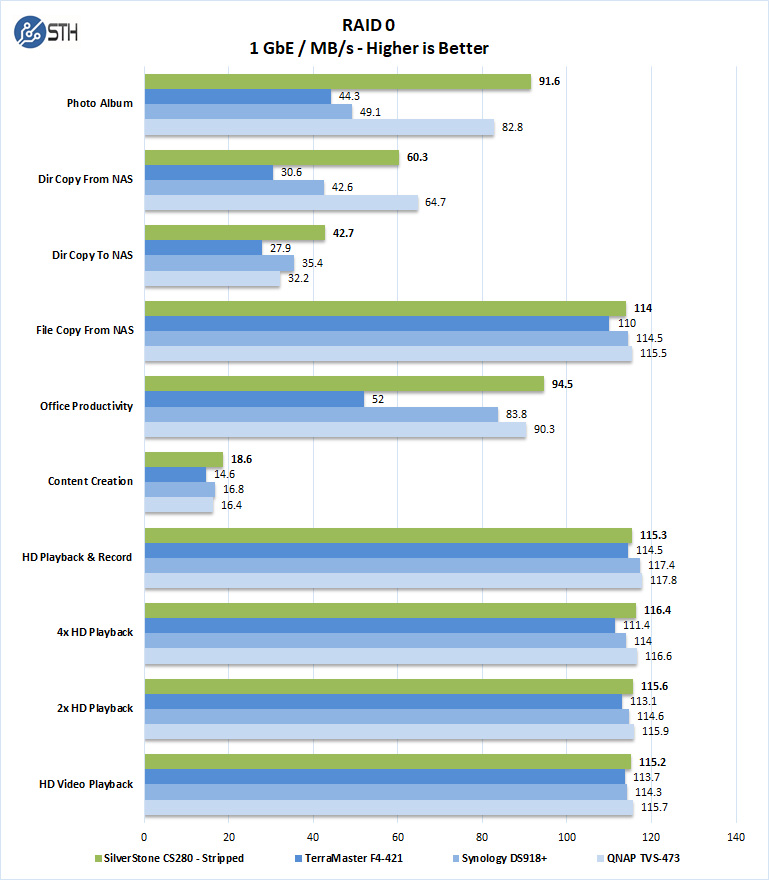
Here we see the results of our Stripped (RAID 0) tests, in this set, the SilverStone CS280 NAS easily takes the top performance results. If you look at the Photo Album test, it is the clear winner.
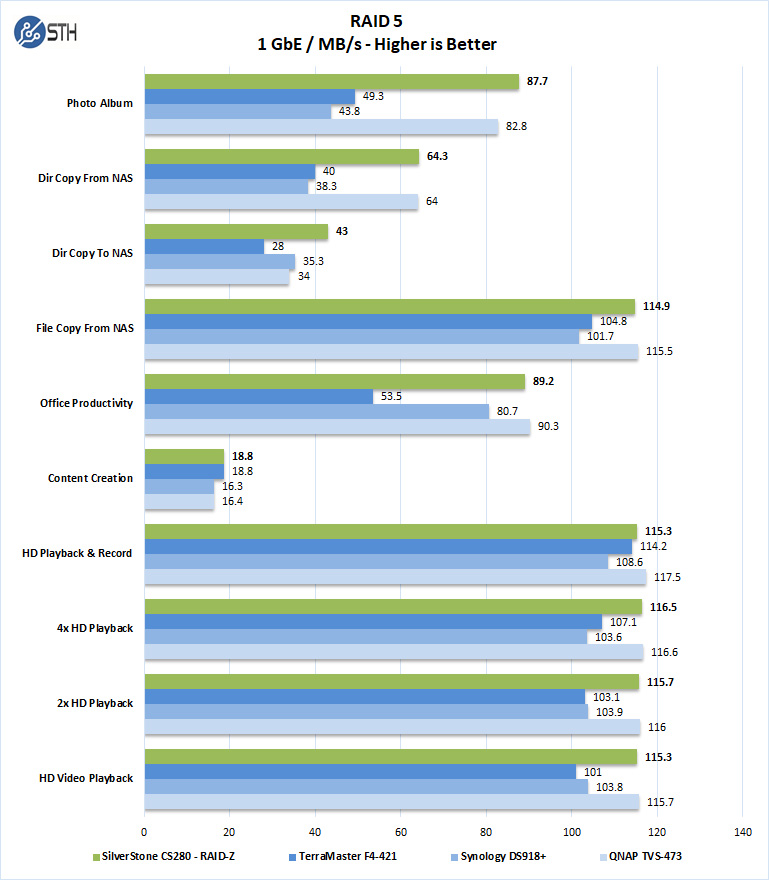
In our RAID-Z (RAID 5) tests which would be the most common RAID type used we find the CS280 NAS performs as expected with results keeping up with top-end 4-Bay NAS.
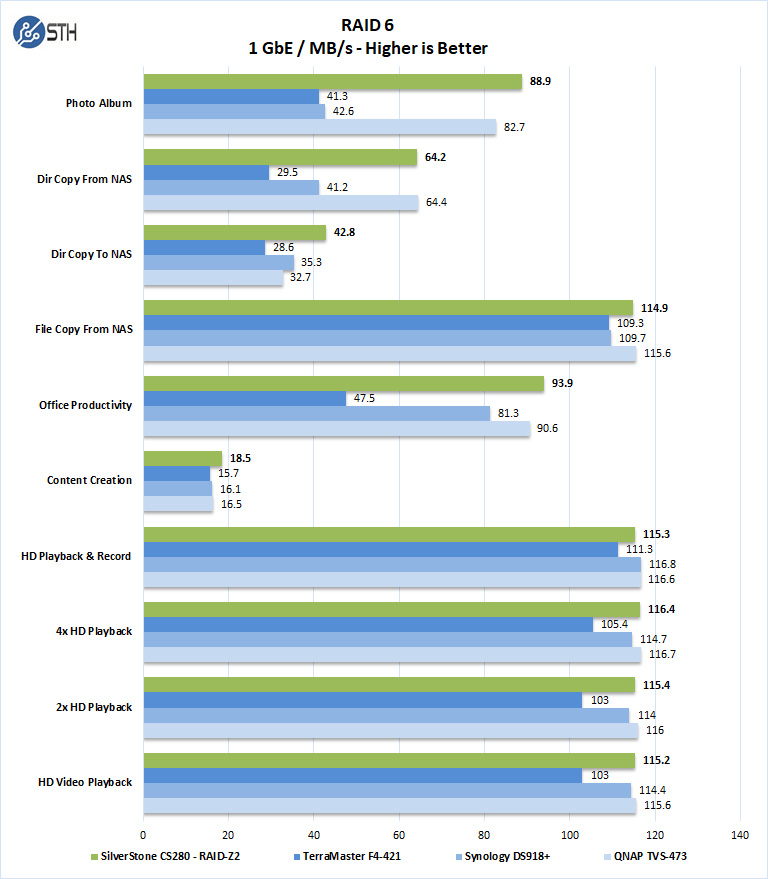
RAID-Z2 (RAID 6) is another common RAID type for 4-bay NAS units and our results match close to RAID 5 results.
Let us continue on with Encrypted benchmarks.
SilverStone CS280 NAS Encrypted Benchmarks
We also ran Encrypted benchmarks on our CS280 NAS on each RAID type with encrypted pools.
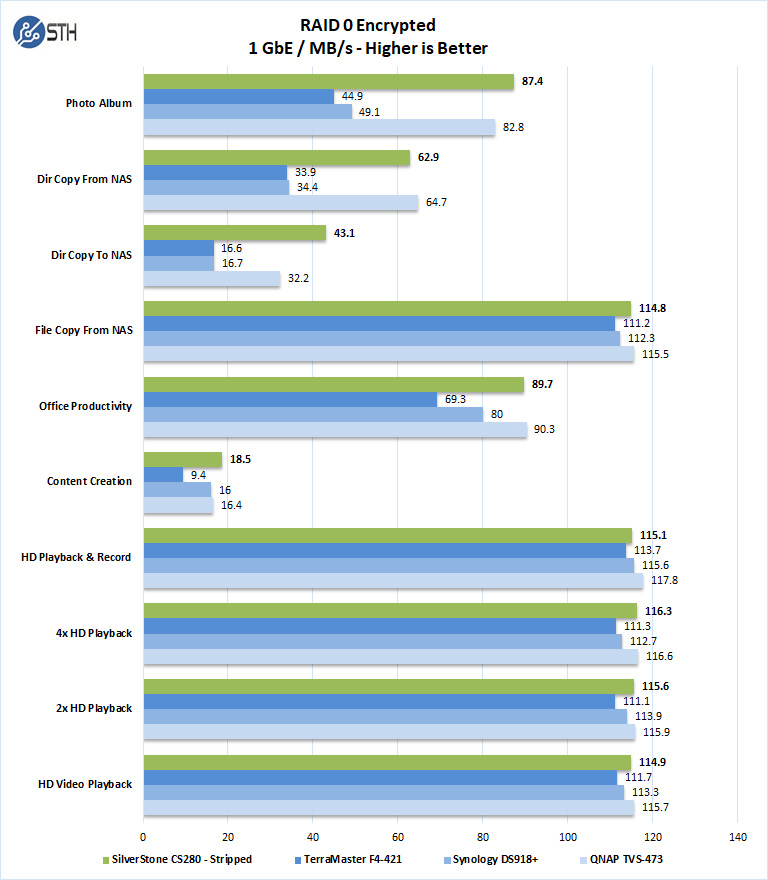
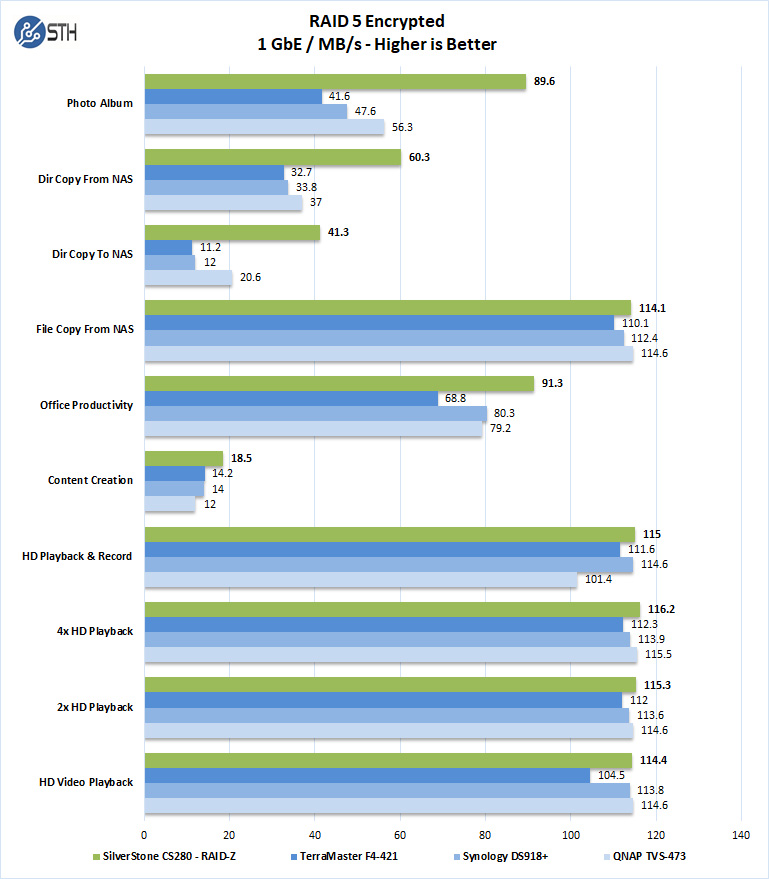
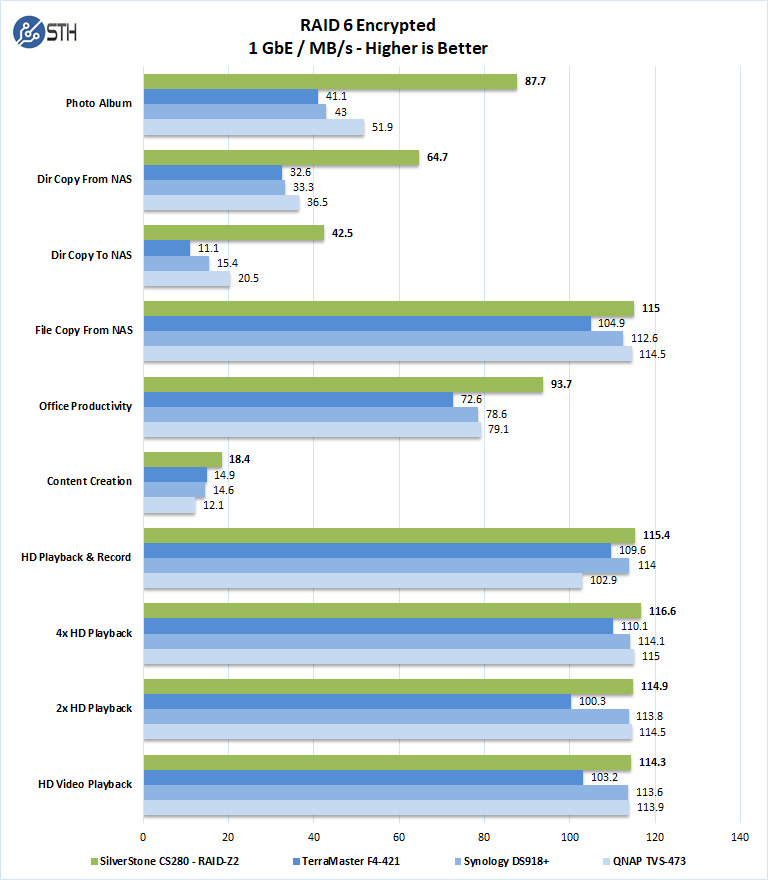
The CS280 NAS handles encryption rather well, the results match up to non-encrypted results which shows the Intel Xeon Gold 6134 crunches through encryption with ease. If you look at the first three results on the last chart, one can see that having a fast 8-core CPU is a massive improvement.
Let us next take a look at the power usage and finish with our conclusion.




LOL… love the overkill! A nice Xeon D system with enough onboard SATA ports & 10 GbE… yeah. I realized SuperMicro offers 2 different PCIe- (2 or 4) NVMe drive cards… that or a video card would be a crazy converged widget. Or… a case like this that could take a FlexATX and you’d get 2 PCIe slots.
If I was ready to abandon 3.5″ drives/jump fully on the 2.5″ drive bandwagon this could be great. At this point I’m not there and I’m still waiting for their latest 8x 3.5″ drive case (CS 381 or something!?) to become available. That one can allegedly take a FlexATX board too…..
> Cable clearance is very tight but everything fits. The fully modular power supply is almost a must here.
This sentence on page 2 followed by a picture that explains very well that fully modular PSUs here are almost a no-go here. It is like the person arranging the pictures for this review strongly disagrees with the opinion of the reviewer here. LOL, it’s just hilarious. Now, look at the picture again and recall what the reviewer wrote on page 1:
> The power caps can be bent around very easily so care should be taken to not break them.
Now look at the clearance between those caps and the modular PSU cables at the photo. LOL, again…
Such compact cases with little space “behind” the PSU are a prime example of the one disadvantage modular PSUs have in such space-constrainted situations: A need for additional space for those plugs there.
A well-chosen non-modular PSU would have avoided modular PSU cables (almost) rubbing shoulders with the SATA connectors and buffer caps. Also note how the SATA backplane is aiding the (potential) use of a non-modular PSU, as it has three of the SATA ports relocated from the area where normally the cables of a non-modular PSU would exit the PSU case.
I am just on page 2 of the review and i already see myself starting to question the reviewers experience with regard to assembling systems and how much thought went into writing the review. Hmm, it almost feels like this review did not just review a Silverstone case, but needed to plug (pun intended) yet another Silverstone product series…
There’s enough room for modular just barely from the pics. I read that part as without modular you’d have too many cables inside so fully modular means you can cut down on cables? That’s reasonable to me. If modular didn’t fit, that’d be a problem. If it fits and cuts down cable clutter, that’s what I’d want.
Great review and build. Counting on STH to always do something over the top like this. Ya’ll rock.
And I’d do modular seeing this too.
@JaredD, you would buy a PSU fitting for the system, not buy a PSU with the mosts cables, no? Why would you think a non-modular PSU has to come with too many cables? There is no logic to this thought.
It fits doesn’t it? I’m totally perplexed. These guys have something that’s actually working and you’re set on some theoretical non-modular PSU that you don’t know if it would actually work. For me, I like examples with pictures of something working. They’ve shown it. You haven’t.
Ah, i see. A believer. “Some theoretical …”, “that you don’t know if it…” “they have shown it”. Well, i guess there is no point continuing…
nice review, but dissapoitting computer case.
2,5 inch hdd space? and….8 sata ports?
why not 3,5 inch hdd? and why not sff-8087 ports?
I had this case and unless they updated it there is really no airflow over the drives. I had 8 4tb 2.5″ spinners in this case and the ones towards the center were getting uncomfortably hot (don’t remember the temp, it’s been a while).
I have this chassis and I’m going to replace the motherboard as I’ve just used a consumer Asrock Z370m-ITX/AC and want one of those Supermicro boards. It really requires some dedication to build this system and one thing that could massively improve the situation for me, is if they could accept two mini-sas connectors and do the breakout on the backplane. But it really is a very nice chassis.
By the time I’m done filling it with 4TB HDDs, I think 4TB SATA SSDs should have dropped to an acceptable level and with 30TB 2.5″ SSDs being a reality already, I think there’s plenty of room for future growth.
Great article!
I’m surprised there’s any airflow over the drives once the front door is closed.
Why isn’t it mesh?
Bán nhà mặt phố Hoàng Hoa Thám, Hà đông, 98
mét vuông, 4 lầu, 9.6 tỷ.